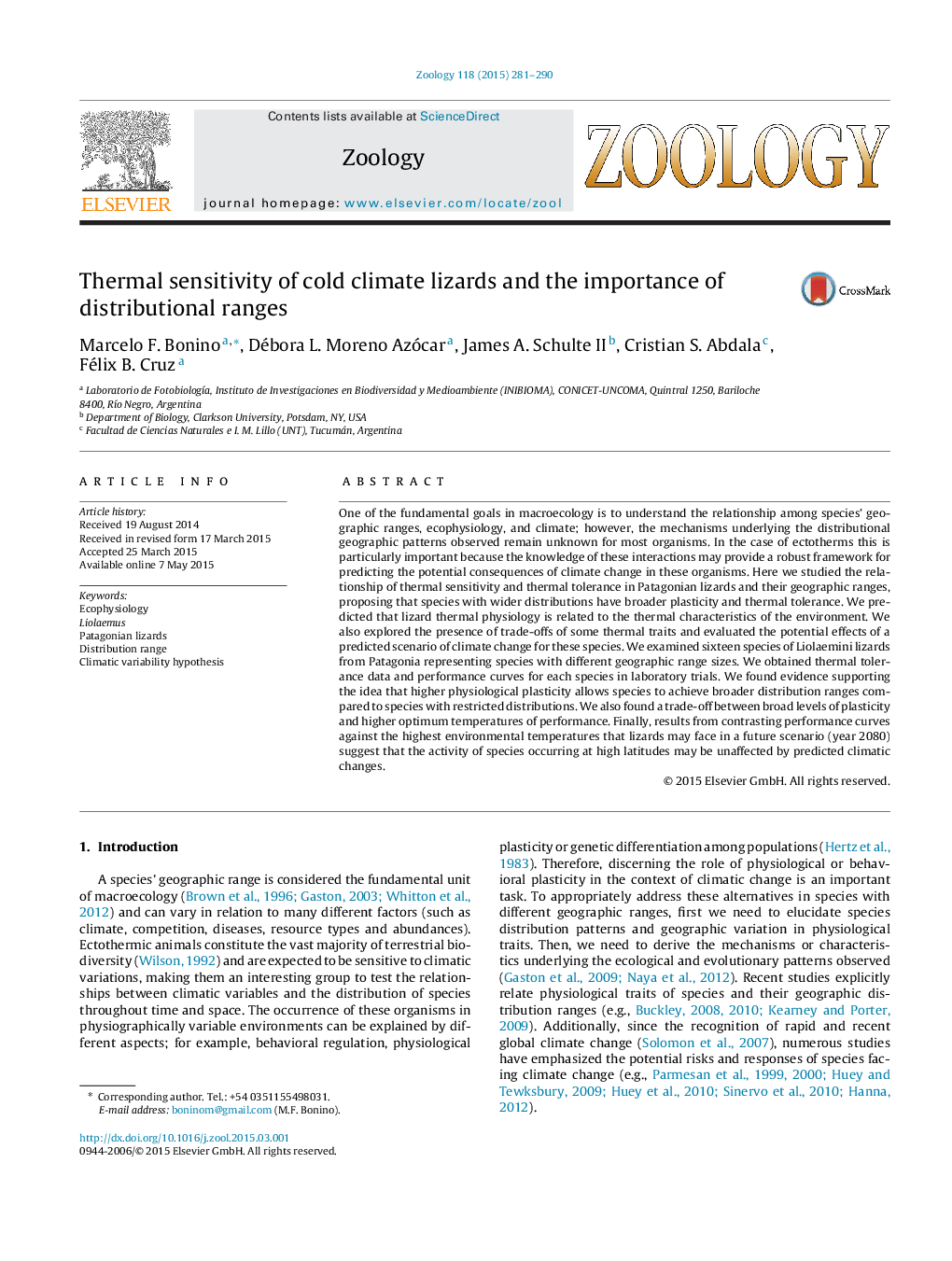| Article ID | Journal | Published Year | Pages | File Type |
|---|---|---|---|---|
| 2790984 | Zoology | 2015 | 10 Pages |
One of the fundamental goals in macroecology is to understand the relationship among species’ geographic ranges, ecophysiology, and climate; however, the mechanisms underlying the distributional geographic patterns observed remain unknown for most organisms. In the case of ectotherms this is particularly important because the knowledge of these interactions may provide a robust framework for predicting the potential consequences of climate change in these organisms. Here we studied the relationship of thermal sensitivity and thermal tolerance in Patagonian lizards and their geographic ranges, proposing that species with wider distributions have broader plasticity and thermal tolerance. We predicted that lizard thermal physiology is related to the thermal characteristics of the environment. We also explored the presence of trade-offs of some thermal traits and evaluated the potential effects of a predicted scenario of climate change for these species. We examined sixteen species of Liolaemini lizards from Patagonia representing species with different geographic range sizes. We obtained thermal tolerance data and performance curves for each species in laboratory trials. We found evidence supporting the idea that higher physiological plasticity allows species to achieve broader distribution ranges compared to species with restricted distributions. We also found a trade-off between broad levels of plasticity and higher optimum temperatures of performance. Finally, results from contrasting performance curves against the highest environmental temperatures that lizards may face in a future scenario (year 2080) suggest that the activity of species occurring at high latitudes may be unaffected by predicted climatic changes.
